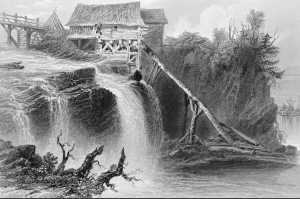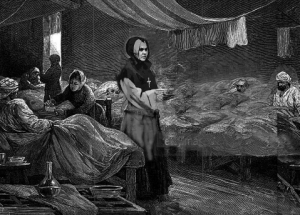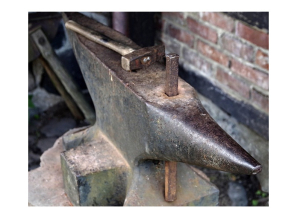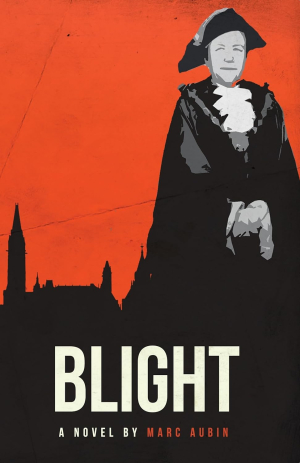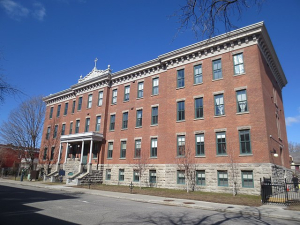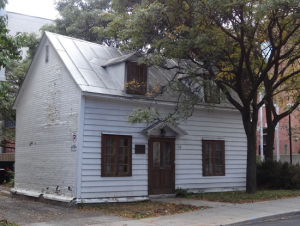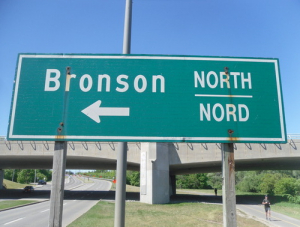uOttawa CRCCF – Vie Française dans la Capitale
The goal of French Life in the Capital is to tell Canadians an untold Ottawa story about the participation of Francophones in building the nation's capital. An outcome of Chantier Ottawa, an initiative coordinated since 2011 by the Centre de recherche en civilisation canadienne-française (CRCCF) with the participation of over fifteen French Canadian specialists, the exhibition presents archival documents of diverse origins about Ottawa’s Francophone population, its institutions, its achievements, and its ambitions at various times in its history.
Join us in exploring the role of the Francophones in early Bytown, with these excerpts from the University of Ottawa’s excellent “Vie française dans la capitale” website:
Bytown and its First French Canadians
https://www.viefrancaisecapitale.ca/espace/bytown_and_its_first_french_canadians-eng
Lowertown’s First Resident
https://www.viefrancaisecapitale.ca/espace/lowertowns_first_resident-eng
From Loggers to Merchants
https://www.viefrancaisecapitale.ca/espace/loggers_merchants-eng
First Families
https://www.viefrancaisecapitale.ca/espace/first_families-eng
Religious Beginnings in Bytown
https://www.viefrancaisecapitale.ca/espace/first_families-eng
A Political Space is Born
https://www.viefrancaisecapitale.ca/pouvoir/political_space_born-eng
Michael McBane – Bytown 1847
Historian Michael McBane, author of Bytown 1847: Élisabeth Bruyère & the Irish Famine Refugees, re-tells this important story for the "Time Travelling with the Historical Society of Ottawa" HSO/Rogers TV series: https://www.historicalsocietyottawa.ca/resources/videos/time-travelling-with-michael-mcbane-bytown-1847
Michael is also author of John Egan: Pine & Politics in the Ottawa Valley.
Curtis Wolfe – William Tormey
Curtis Wolfe researches local history and heritage and his writings have been featured in Lowertown’s Community Newspaper The Echo.
Curtis uncovers the history of a local street: What’s in a name? Uncovering the namesake of Tormey Street.
Lowertown East: Urban Renewal & the Aftermath
Our final in-person speaker presentation of 2023 took place on the afternoon of November 12 and was again hosted by the Main Branch of the Ottawa Public Library. We were pleased to welcome Marc Aubin, author, community historian, former President of the Lowertown Community Association and member of the King Edward Avenue Task Force, who spoke to the 60 attendees about the devastating effects on the Lowertown community of urban renewal projects that took place between the 1950s and 1970s. He began by giving us a brief history and description of Lowertown.
Lowertown, which Marc explained had first been laid out by Colonel By in the 1820s, is bordered by the Ottawa River to the north, the Rideau River to the east, Rideau Street to the south and the Rideau Canal to the west. It was a working class community, primarily French Catholic, but with a significant Irish Catholic component, along with a Jewish community and the first Italian community in Ottawa. Sussex, Dalhousie and St. Patrick were the major local commercial streets, with the Byward Market and Rideau Street being frequented by all citizens of the city. It was a vibrant community, self-reliant and historically one that defended French language rights.
Following the Second World War, a planning policy known as “Urban Renewal” dominated the thinking around housing policy in the governments of western nations. The war had led to a decline in the condition of the housing stock, due to the diversion of the required materials to the war effort. The end of the war created an increased demand for housing from returning veterans starting families. Urban Renewal promoted the wholesale replacement of buildings in what it deemed as “blighted” areas with new social housing projects. It was believed that the clearing of these blighted areas would also yield social benefits by resolving issues including: immorality, vice, crime, juvenile delinquency, infant mortality, poor health and an apathetic population. The introduction of upgraded roadways was also a strong motivation. Not surprisingly, lower income neighborhoods were those chiefly targeted for these renewal projects. The City of Ottawa initially identified a number of communities, the National Capital Commission also being involved, and the affected communities had little to no options for appeal. One of these communities was Lowertown East.
Lowertown East is that section of Lowertown east of King Edward Avenue, covering about 186 acres and consisting of 3 sub-communities, Bishop’s Lots, (early smaller lots), Anglesea Square, (architecturally more similar to Lowertown West) and Macdonald Gardens, (a later community from the 1920s). In 1968 the population of the area was 9,400, 90% of which was French Catholic. There was also a strong Jewish presence and a study taken at that time found that 75% of the residents wanted to stay in the community.
The first large scale urban renewal project in Canada took place in Toronto starting in 1948. In 1956 Central Mortgage and Housing Corporation modified its policies to approve urban renewal projects, for which the City of Ottawa received funding in 1958. In 1962, the National Capital Commission expropriated the northern portion of Lowertown, destroying some 400 housing units. This was followed by the expansion of King Edward Avenue, cutting down 100 large elms, to support the new Macdonald-Cartier Bridge that opened in 1965. The City of Ottawa began expropriation in Lowertown East in 1967, continuing until 1977. In 1971 the first social housing project was opened in Lowertown East. The community had already begun to organize against these renewal projects, as early as 1965, as did other communities within Ottawa. In 1975 key members of the Housing Department resigned over a dispute relating to demolition policy with them Councillor Georges Bedard and Mayor Lorry Greenberg, bringing an end to Urban Renewal as a policy in the city.
The destruction of city centres across North America led to a backlash, Jane Jacobs being among the leaders of this movement. In Toronto, pressure from the public eventually forced Premier Bill Davis to cancel the proposed Spadina Expressway. Nationally, a 1968 Task Force led by Paul Hellyer concluded that between 70% - 80% of the buildings demolished under urban renewal projects could have been rehabilitated. As a result of these findings, Federal financial support of urban renewal projects ended in 1973.
Unfortunately for Lowertown East, it was the final project approved and one of the largest. Despite the efforts of resident committees to oppose the planned renewal, or to modify it, it proceeded without approval from the community. Between 1967 – 1977 there were 462 expropriations in Lowertown East, an estimated 1,400 families were forced to relocate at a cost of $31 Million ($250 Million in 2023 dollars). Among the issues identified by the community were: inconsistent / inadequate compensation, excessive rents in new buildings, the destruction of the French language character of the community, no provisions for elderly residents, an abandonment of a mixed income strategy leading to ghettoization. These concerns remained unaddressed.
There were a couple of positive outcomes of the urban renewal of Lowertown East. The community countered the planned redevelopment through the construction of three cooperative housing projects, the rebuilding of the Catholic Community centre and through the creation of a new French language High School, De La Salle Academy. There were however far more negative outcomes. These included the loss to the community of many of the more affluent and educated members, who fled to the suburbs or other parts of the city, the loss of the Irish and Jewish communities, the closure of the major churches and synagogues, the creation of a transient population who had little control over their own housing, the segmenting of the community by major roadways, the belief that the renewal had been an organized attempt to destroy the main Francophone community and a lingering distrust of municipal politicians and staff. Today, even though the community has regained much of its former strength through such organizations as the Lowertown Community Association, it still finds it difficult to achieve its community goals and finds itself fighting similar battles as it had in the past to preserve its heritage. The battle never ends.
Following Marc’s presentation, we were honoured to have Councillor Stephanie Plante answer a few questions. She promoted the idea of creating a Lowertown Museum, similar to those in other communities which are now part of Ottawa. She also spoke of the need for elected officials to obtain input on policies and programs that will affect them. She emphasized the responsibility of Councillors to seek out this input from those who may not normally provide it, due to their age, language, income or other factors.
Marc has written two books that relate to Lowertown:
- BLIGHT, published by Crow’s Nest Books in 2018 is a “fictional” account of the struggles of an activist against City Hall. It is available at Blight by Aubin, Marc .
- CUNDELL STABLES, THE LAST STABLE IN LOWERTOWN. (With Karen Bailey)
Hatpins & Defiance: The Battle in Ottawa against Regulation 17
Members and guests who attended the October 2022, in-person, HSO presentation at the Auditorium of the Main Branch of the Ottawa Public Library were treated to a tour de force by Jean-François Lozier, Curator at the Canadian Museum of History. Jean-François told a story that, while familiar to Ottawa’s Francophone community, is mostly unknown in the city’s Anglophone community—the “Battle of the Hatpins” or la battaille des épingles. In this David-Goliath struggle, Francophone parents, in particular mothers, fought the Government of Ontario in 1916 to have their primary-aged children attending the Guigues School taught in French.
Jean-François began his account by providing useful background on the French presence in Ontario, noting that many Francophone families had moved to Ontario during the late 19th century, especially to the eastern part of the province, including Ottawa. While wanting their children to learn the language of the English majority, Francophone also parents desired that French be the language of instruction in “bilingual schools.”
Under the British North American Act of 1867, the provinces were assigned responsibility for education, with the proviso that they provide separate schools for Roman Catholics outside of Quebec, and for Protestants in Quebec. Using its constitutional authority, the Ontario Government, under pressure from those worried about the growing French presence in the Province, introduced Regulation 17 in 1912 which forbade the use of French as the language of instruction beyond Grade 2.
This sparked outrage amongst Ontario’s Francophone community, leading to, among other things, the birth of an Ottawa newspaper Le Droit that committed itself to the struggle for linguistic rights.
Jean-François explained the divisions within Ottawa’s Roman Catholic School Board between its French-speaking and English-speaking members over the issue, and how various schools responded both in Ottawa and in other parts of the Province to Regulation 17—a combination of obedience, non-compliance, and defiance.
The issue came to a head in January 1916 at the Guigues School when parents, mainly mothers, escorted two sisters, Béatrice and Diane Desloges, into the school to teach their children in French. This brought the parents into direct confrontation with the police and the government-appointed school board who were determined to block their entry and their occupation of the school. Jean-François noted that the extent to which the mothers used their hatpins to fend off the police is unclear. News reports said that in the Battle of the Hatpins, one constable had his thumb bitten, while another received a black eye.
In the end, calmer heads prevailed, with the issue going all the way to the Judicial Committee of the Privy Council in London to be settled. While the Privy Council ruled in favour of the Ontario Government in its use of English as the language of instruction in “bilingual schools,” it ruled against the government in its treatment of Ottawa’s French-led, Roman Catholic School Board.
French continued to be used at Guigues School as a language of instruction, with the Ontario Government losing its appetite for this divisive language battle in the midst of World War I. In the late 1920s, Ontario stopped trying to enforce Regulation 17, but it remained on the statute books until 1944.
In 2016, Ontario Premier Kathleen Wynne apologized to the province’s Francophone community.
A Personal History of Laroque's Department Store
Robert Vineberg, son of one of Laroque's co-owners, shares his personal stories and the history of one of Lowertown Ottawa's well-known and well-loved department stores.
A Genteel Woman in Need: Emma Maud Lampman
Dianne Brydon tells us about the life of Emma Maud (Playter) Lampman: married young to "Confederation Poet" Archibald Lampman, widowed at age 32, and being among the first women to work in Canada's civil service at the turn of the 20th century.
The Barber Family: Our Proud Place in Ottawa's History
Born into slavery in Kentucky, Paul Barber, was one of Ottawa’s earliest Black permanent residents and a renowned horse trainer, founding a family that has made its mark in the capital for over a century. Thomas Barber, Paul Barber's grandson, shares the remarkable story of his family and their important role in Ottawa’s past.
Old Buildings
June 1827
A while back I told you about the Old Registry Office that was built in 1873. There are even older buildings around Ottawa and many of them can be seen in a quick trip around Lower Town and in Sandy Hill. A cluster of them is viewable near the Basilica at Sussex and St. Patrick. The Basilica itself is one of the oldest surviving structures in Ottawa.
The oldest of all Ottawa buildings is the Bytown Museum beside the canal, built in 1826 as Colonel By's storehouse for the construction of the Rideau Canal. The Canal was officially opened 175 years ago, in 1832. Houses were built in Lowertown as the community grew and, as Canada became a nation, many upscale houses were built in Sandy Hill. This article will focus on a few of these house, but a good walking tour will show off even more.
... to tell the stories of some of the people who have lived here over the last 175 years.
There is a particularly well-preserved house at 138 St. Patrick Street that belonged to Flavien Rochon. Built circa 1832, it is typical of a workingman's home of the era. Before it became the property of Mr. Rochon, four sisters of the Grey Nuns of the Cross (now the Sisters of Charity of Ottawa) lived there from 1845-1851. Mr. Rochon was a carpenter by trade who also sculpted wood and who was involved in the construction of both Notre Dame Basilica as well as the Parliamentary library. The house was acquired by the National Capital Commission in 1965. His next door neighbour at 142 St. Patrick was Dr. Francois-Xavier Valade whose imposing house was built circa 1864. The Valade house is typical of ancestral homes in Normandy. Dr Valade lived there from 1866 to 1918, was one of Ottawa's first doctors and was also one of the doctors responsible for examining Louis Riel before Riel's 1885 trial in Regina. The house was known as Le Balcon Blanc because of the white veranda overhanging the entrance. The original balcony was replaced at the beginning of the twentieth century.
Before leaving Lowertown for Sandy Hill, we should mention Notre Dame Basilica, the oldest church in the capital, built between 1841 and 1865 on the site of an earlier church built in 1832. It contains beautiful statues and woodwork carved by Louis Philippe Hebert, Phillipe Pariseau and Flavien Rochon whose house was described above. The tower of the Basilica stands nearly 55 metres high and the organ has more than 4000 pipes!. This just a small sample of buildings constructed before Canada became a nation in 1867.
Louis Besserer, a notary public from Quebec, owned a large parcel of land that became the area known as Sandy Hill, one of the first “elite” neighborhoods in Ottawa. Besserer had inherited the land from his deceased brother René-Léonard Besserer (d. 1823) in 1828, but the area did not really develop before Ottawa was picked as the site of Canada's capital by Queen Victoria in 1857. Growth accelerated after Confederation and the area became home to many politicians and senior government officials.
One of the oldest houses in Sandy Hill is the Besserer House built c. 1844 where L. J. Besserer lived from 1844 to 1866. It was later occupied by W. T. McDougall, one of the fathers of Confederation. The house is at 149 Daly Ave and is really the center of Sandy Hill development. Some changes to the verandas and the western face have taken place since 1844, but the house is still largely the same as when it was originally built.
Another older house is the Lyon house, built c. 1850. Its first occupant was a son of the original builder Colonel George Lyon Fellowes. Robert Fellowes, the son, was a member of Parliament and in 1876, the Mayor of Ottawa. The pamphlet put together by the Regroupment des Organismes du Patrimoine Franco-Ontarienne states as follows “The bay window, the magnificent wooden portico, and the decorative flourishes on the facade make it one of the most charming residences. ” The Toller House, built c. 1875. Its first occupant, T. Fournier, was a creator of the Supreme Court of Canada and one of the first Justices. The next occupant, for whom the house is named, was Frederik Toller, Auditor General of Canada The next occupant was Louis-Phillipe Brodeur who was simultaneously Minister of Finance and Oceans, a Justice of the Supreme Court and Lieutenant Governor of Quebec. How he managed to handle all four jobs, we'll have to guess! The City of Ottawa designated the house an historic property in 1982.
These are only a few of the historic buildings in downtown Ottawa. Take a tour and discover much, much more!
Cliff Scott, an Ottawa resident since 1954 and a former history lecturer at the University of Ottawa (UOttawa), he also served in the Royal Canadian Air Force and the Public Service of Canada.
Since 1992, he has been active in the volunteer sector and has held executive positions with The Historical Society of Ottawa, the Friends of the Farm, and the Council of Heritage Organizations in Ottawa. He also inaugurated the Historica Heritage Fair in Ottawa and served on its organizing committee.
The Origins of Street Names
January 1820
Considering how many people in Ottawa are new to the city, it seemed reasonable to do a little research and find out who, or what, some of the oldest Ottawa streets are named after. Many persons who contributed to the foundation and growth of our City are not well known, and I understand both City staff and the Historical Society of Ottawa have developed tentative plans to make early Bytowners or Ottawans better known. This is a project deserving support! No article of this size can hope to do much more than scratch the surface of this topic. So only a few streets are covered.
Much has been said and written about the proper use of Lebreton Flats which contained Lebreton Street. These were named after Charles LEBRETON (1779-1848) who was a native of Jersey and one of Nepean Township's earliest settlers. He came to our area from Newfoundland and served with distinction in the War of 1812. With a partner, he purchased Lebreton Flats in 1820 and, in 1826 got into a legal wrangle with Colonel By and the Governor General, Lord Dalhousie over the price he wanted for his land. He spent a good deal of money defending the legality of his land ownership against the government of the day He retained his land, but the Rideau Canal was built elsewhere probably because Dalhousie and By rather disliked him after the court battle. Was sour grapes involved in the location of the canal?
Nicholas SPARKS (1792-1862) for whom Sparks Street is named is much better known,. but the extent of his good works in Ottawa is less known Sparks came to Canada in 1816, from Ireland, to avoid religious strife. He married the widow of Philemon Wright Jr. in 1826. He owned a sawmill and vast timber rights in the area. In 1821, for the equivalent of $500 he purchased land that extended from what is now Wellington St. to Laurier Avenue West and from Waller Street to Bronson Avenue. He sold part of his land to construct the Rideau Canal, but, because of the price he asked, another 96 acres were expropriated much to his chagrin!
Perhaps wishing to avoid religious strife in Canada, he donated land for churches to both the Anglicans and the Presbyterians. Sparks went on to serve for many years in local government. Sparks named a street on his land after a friend, Daniel O' CONNOR, who became Treasurer of the Dalhousie District (later Ottawa-Carleton) and another after his son-in-law, James SLATER Slater Street was first named Waugh Street, after a local merchant Caldwell Waugh., James Slater came to Canada about 1830, married Sparks' daughter in 1847 and went on to be, successively, Provincial Land surveyor, Superintendent of the Rideau Canal and Chairman of the Ottawa School Board.
Robert BELL (1821-1873) was a promoter of railway construction, a land surveyor and eventually, a journalist. He bought the Bytown Packet in 1849 and two years later changed the name to the Citizen, He sold the paper in 1865 to I. B. Taylor. One of the people from whom he bought the paper, Henry J. FRIEL (1823-1869) served as Mayor of Bytown in 1854 and Mayor of Ottawa in 1857, 1863, 1868 and finally, 1869 Pictures of both Bell and Friel are available at the City Archives.
More streets named after prominent Ottawa residents
In Lower Town, Bruyere Street is named after Mother Elizabeth BRUYERE (1818-1876) the founder of the Grey nuns and the Ottawa Hospital (1845) She also established an orphanage, a hospice and an asylum for destitute women. GUIGUES Street is named after Monsignor Joseph-Eugene—Bruno Guigues (1805-1874), Ottawa's first Roman Catholic Bishop. He founded what became the University of Ottawa on land donated by Louis BESSERER.
Further west, BRONSON Avenue was named after Erskine Henry Bronson, a prominent businessman, whose father Henry Bronson had founded a local lumbering firm. Speaking of lumbering, who else could BOOTH Street be named after other than J. R. Booth “the Ottawa Valley Lumber King”.
These are only a few of the origins of Ottawa street names. The City of Ottawa Archives is working on identifying many more.
Cliff Scott, an Ottawa resident since 1954 and a former history lecturer at the University of Ottawa (UOttawa), he also served in the Royal Canadian Air Force and the Public Service of Canada.
Since 1992, he has been active in the volunteer sector and has held executive positions with The Historical Society of Ottawa, the Friends of the Farm and the Council of Heritage Organizations in Ottawa. He also inaugurated the Historica Heritage Fair in Ottawa and still serves on its organizing committee.
Then & Now




